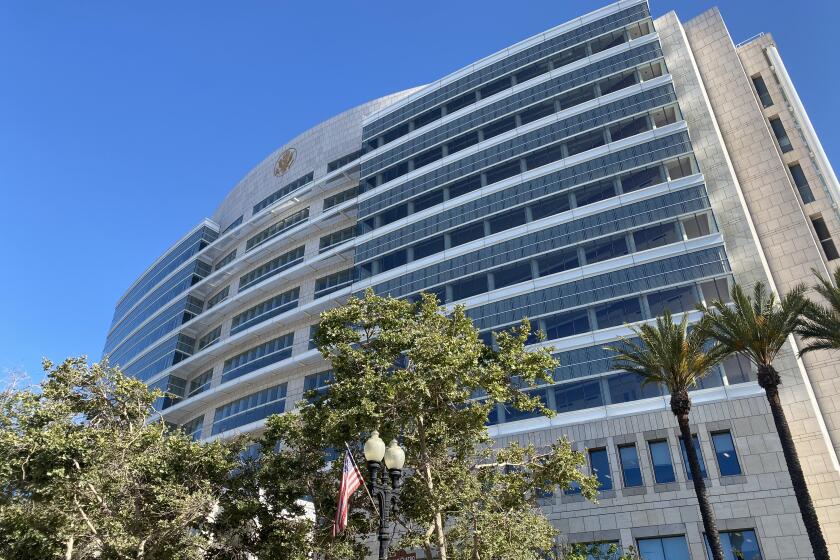Colombian treasures at Bowers
- Share via
The gold crucifix and rosary studded with Colombian emeralds is known as “The Atocha Cross.”
In 1986 — 364 years after the Nuestra Señora de Atocha (“Our Lady of Atocha”) went down during a hurricane in the waters off what is now Key West, Fla. — a treasure-hunting expedition recovered the cross and rosary from the Spanish ship’s sunken cargo.
The glistening artifact now belongs to a private collector, but it’s about to make a public appearance at the Bowers Museum as an appendage to a larger exhibition titled “Sacred Gold: Pre-Hispanic Art of Colombia.” The exhibition that begins Saturday is comprised of golden objects and archaeological treasures from pre-Spanish Conquest Colombia.
The Museo del Oro in Bogotá, which houses an art collection owned by that nation’s central bank, has loaned some 200 gold, ceramic and stone artifacts for the show, which runs through July 1.
“Sacred Gold” is the Santa Ana museum’s second one in 2012 themed around gold. The first, focusing on natural gold pieces discovered in California, opened in February and runs through Sept. 9.
“This is what dazzled the Spaniards, when they saw people adorned in objects such as that,” said Nancy Ravenhall Johnson, the museum’s spokeswoman, pointing to a circular breastplate dating to between 200 B.C. and 1,300 A.D.
Pendants shaped like fishes or bats, and pottery pieces depicting jaguars and monkeys are just some of the treasures that visitors will see.
Back in the years when Spain’s Conquistadors looted the region of modern-day Colombia near the Central American isthmus, its indigenous peoples did not use gold as a monetary currency but to create religious ornaments.
Maria Alicia Uribe, the Museo del Oro’s director, was on hand for Thursday’s media preview.
For her, the show’s most striking feature is its archaeological diversity. The artifacts in the bank’s collection were unearthed from 13 regions around Colombia, and they each had their own style of metallurgy and distinct periods for gold metalwork, Uribe said.
“People tend to think that those societies that lived in between [the Mayan and Incan civilizations] ... were less important,” she said. “But actually, some of the most important developments — social and cultural development — took place in those areas.”
“Sacred Gold” isn’t the first collaboration between the Bowers and Museo del Oro.
In 1992, the Bowers exhibited artifacts from the Colombian museum’s collection in a newly opened wing, where the 2012 show will be displayed, said Bowers President Peter Keller.
After a 15-year hiatus, Keller said he returned to Colombia to rekindle the relationship with the Museo del Oro. What resulted was an agreement for a cultural exchange.
After agreeing to send its gold show to Santa Ana this spring, in return, the Bowers will send an exhibit of artifacts from its Native American collection to Bogotá during the fall.
“It made sense to rekindle our friendship with the Museo del Oro, and I’m delighted with this exhibition,” Keller said. “What’s really exciting about it, I think, is the fact that we are actually, because of this old friendship, able to forge a true cultural exchange, which is very rare in museums these days.”
Twitter: @ImranVittachi
If You Go
What: “Sacred Gold: Pre-Hispanic Art of Colombia”When: Saturday through July 1
Where: The Bowers Museum, 2002 N. Main St., Santa Ana
Museum hours: Open from 10 a.m. to 4 p.m. Tuesdays through Sundays
More information: at bowers.com
All the latest on Orange County from Orange County.
Get our free TimesOC newsletter.
You may occasionally receive promotional content from the Daily Pilot.



